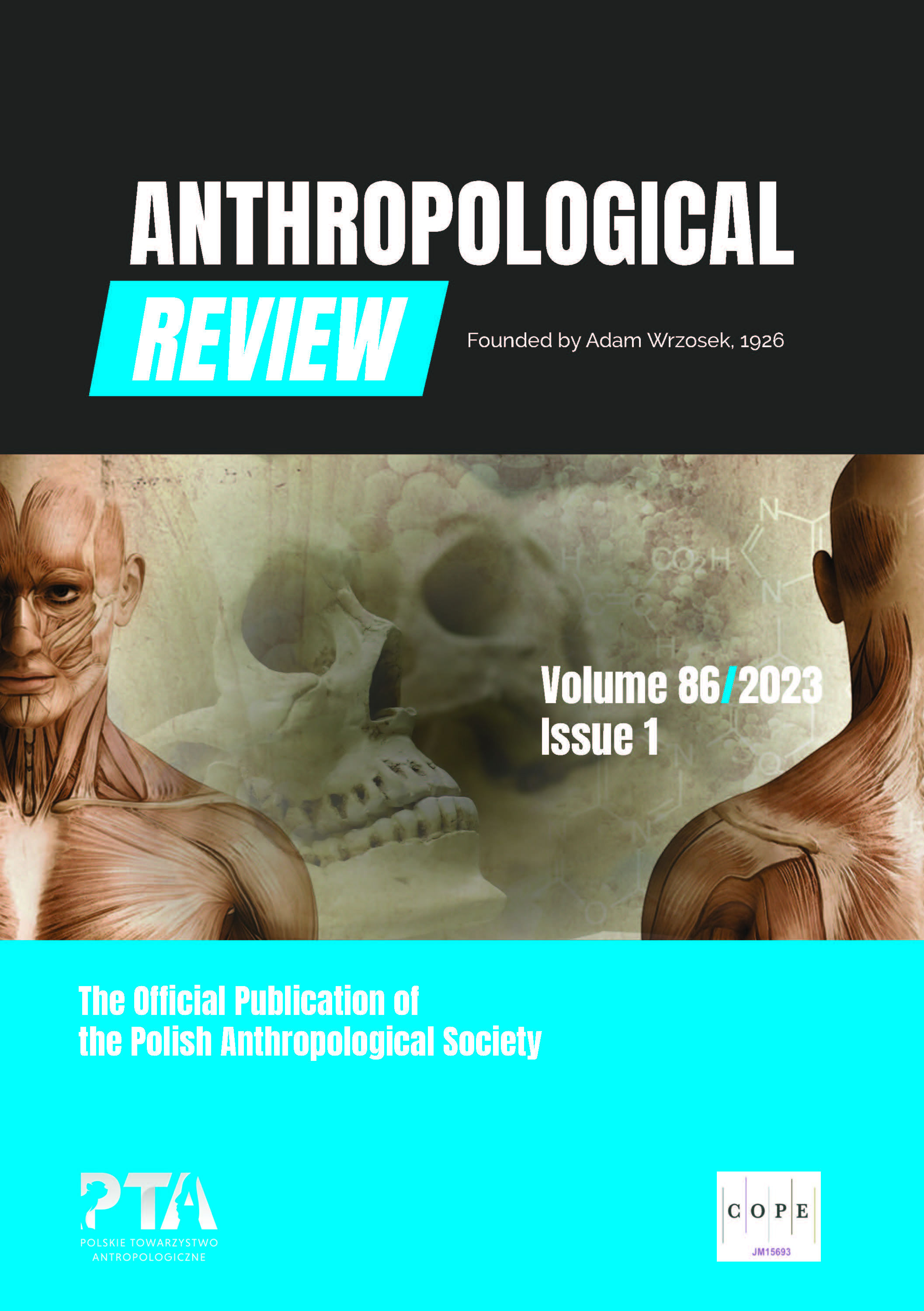Do the short die young? Evidence from a large sample of deceased Polish adults
Do the short die young? Evidence from a large sample of deceased Polish adults
Author(s): Piotr Paweł Chmielewski, Sławomir Kozieł, Krzysztof BorysławskiSubject(s): Anthropology, Social Sciences
Published by: Wydawnictwo Uniwersytetu Łódzkiego
Keywords: age; aging; body height; height; lifespan; longevity; stature; survival
Summary/Abstract: Body height is associated with various socioeconomic and health-related outcomes. Despite numerous studies, the relationship between stature and longevity remains uncertain. This study explores the association between self-reported height and lifespan. Data from 848,860 adults who died between 2004 and 2008 in Poland were collected. After excluding a small proportion of records due to missing data or errors, we examined records for 848,387 individuals (483,281 men, age range: 20–110 years; 365,106 women, age range: 20–112 years). Height was expressed as standardized residual variance derived from linear regression in order to eliminate the variance of year of birth on height. After the elimination of the cohort effect, five height classes were designated using centiles: very short, short, medium, tall and very tall. The differences between sexes and among classes were evaluated with two-way ANOVA and post hoc Tukey’s test. The effect size was assessed using partial eta squared (η2). Pearson’s r coefficients of correlation were calculated. The effect of sex on lifespan was nearly 17 times stronger than the effect of height. No correlation between height and lifespan was found. In conclusion, these findings do not support the hypothesis that taller people have a longevity advantage. We offer tentative explanations for the obtained results.
Journal: Anthropological Review
- Issue Year: 86/2023
- Issue No: 1
- Page Range: 77-90
- Page Count: 14
- Language: English

